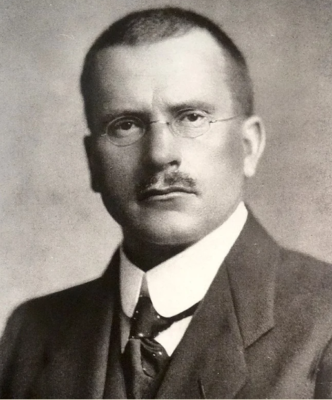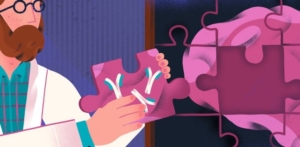
N-N-Dimethyltryptamine, also known as “The Spirit Molecule” or “the businessman trip” is one of the most mysterious and mind-bending psychedelics. The experiences DMT induces are so mind-boggling that even scientists around the world have begun mapping out the DMT hyperspace. In fact, Rick Strassman, the father of DMT, is closely working with scientists, using a DMTx device in order to keep subjects in extended states of altered consciousness so that they can map out the different entities people continuously report to encounter.
But why DMT entities? Why not beings that psychonauts meet on an acid trip or on a mushroom journey? The main reason lies in the fact that thousands of people repeatedly report encountering the same entities during their psychedelic journey. Some of the first documented cases of this phenomenon can be found in Strassman’s book DMT: The Spirit Molecule where he documented his subjects’ encounters with autonomous beings during his series of intravenously administered DMT experiments. However, in 2006, Peter J Meyer took the research further by compiling and analyzing 340 DMT trip reports. While chronicling these reports, he revealed that 226 of them, or two out of three, described vivid encounters with these independent beings.
Later on, in 2020, Alan Davis, an adjunct associate professor who currently works with the psychedelic research team at Johns Hopkins, published the results of the largest survey in the Journal of Psychopharmacology, documenting autonomous entity encounters during a DMT-induced state of altered consciousness. Data compiled from 2561 responses revealed that, “the most common descriptive labels for the entity were being, guide, spirit, alien, and helper.”
These so-called “entities” have become an integral part of a plethora of anecdotes in Reddit threads where trippers often recount their DMT experiences. It would take but a few clicks for anyone to see the similarities in DMT trip reports.
Today’s focus is on one very specific entity, most commonly known as the jester or the trickster. More specifically, we’ll try to decode their role in people’s psychedelic journeys and what we can interpret from meeting these sometimes hilarious, sometimes horrifying entities.
What Do We Know About the DMT Jesters?
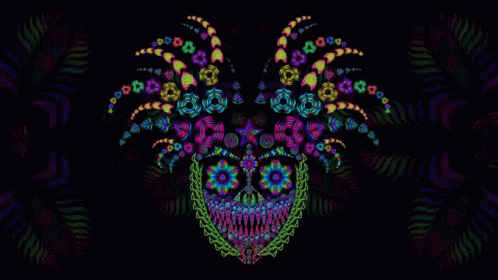
Jesters are commonly described as “clowns”, “jokers”, “imps”, “shapeshifters” or “trickster” looking entities that often appear after the common high-frequency “humm” people report hearing after smoking DMT. These entities often begin to engage in tantalizing and mind-blowing performances and tricks. They may drag the individual through a horrific or confusing experience, often leaving the person bewildered. Most reports describe these entities as existing in a different dimension or spirit realm resembling a circus or a carnival.
Often, DMT journeyers describe entering a cartoon-ish world with black and white checkerboards and stripes or crossing into multi-colored dimensions. There, these jester looking entities will stand out from the rest of the sacred geometry patterns familiar to the psychonaut community. However, the experiences will vary, depending on the tripper. Jesters are dualistic in nature, meaning that journeyers into the depths of the psyche will either encounter malevolent, trickster types of entities or benevolent and fun jesters. The type of jester entity that people encounter may be an indication of what the spirit molecule is attempting to reveal to the journeyer.
Theories of the Nature of Jester Entities
There are two theories that stand out when discussing the consistency of DMT entity encounters. The first one is the “Theory of the Collective Unconscious” proposed by Carl Jung, which essentially stipulates that the characteristics of the jester archetypes represent the characteristics of the “self” or a reflection of the “self”. On the other hand, we have psyconauts who theorize that DMT is a technology allowing users to access other dimensions. In the latter theory, trippers are not hallucinating what their psyche is unearthing but are in fact meeting with other beings. For the sake of timing, we’ll focus on the Jungian perspective.
The Jesters Archetypes and Carl Jung
Carl Gustav Jung was a Swiss psychologist and psychiatrist known as the father of analytic psychology, influenced by Sigmund Freud’s work on psychoanalysis. He developed the concepts of archetypes, and the collective unconscious which offer an interesting perspective on why individuals encounter the jester entities during a DMT experience. In essence, by applying the Jungian perspective, one can assess the appearance, nature and gestures of these entities which are portraits of people’s archetypal patterns of behavior. In other words, the jesters become representations of certain archetypes of the human psyche. To further illustrate this theory and how this explains the nature of the trickster, we’d need to dive deeper into Jung’s theory of archetypes.
These entities typically appear to come out of questions a person is either subconsciously asking or is intending to find an answer to. We may think of them as avatars that the subconscious can use to talk to us with.
The Jungian Archetypes
According to Jung, the human psyche was composed of three components: the ego, the personal unconscious, the collective unconscious. Inspired by Freud, he believed that the ego represents the conscious mind, while memories known or suppressed, are part of the personal unconscious. According to Jung’s theory, an archetype, which in Greek means “original pattern”, represents a universal concept, image, pattern of circumstance or symbol, which can have different interpretations, depending on the area of study in question. In analytic psychology, archetypes are derived from “humanity’s accumulated experiences”. They are genetically coded models of the mind contained in our collective unconscious and are transferred from generation to generation.
Perhaps, it may be easier to explain Jung’s collective unconscious theory through an example. Let’s imagine a group of five people having a collective DMT session. As they all drift in altered states of consciousness, they begin experiencing a feeling of interconnectedness with the universe as a whole. One person begins seeing what we now recognize as sacred geometry symbols, more specifically ”the flower of life” which represents the unity of all life and the interconnectedness of all beings found in various cultures and traditions worldwide. After their trip, it turns out that all participants have seen a similar representation of this sacred geometry symbol. According to Jung, these shared experiences are not just mere coincidences, they are part of our collective psyche. The flower of life symbol is a universal pattern existing and inherited from different Egyptian, Buddhist, Hindi, Islamic and Christian cultures. Even though a person may not consciously be able to recognize the symbol, it is still part of his broader human experience. What may explain why one person sees that symbol and does not recognize it is Jung’s theory that the collective unconscious is inherited and not developed, meaning that these universal symbols were transferred onto our psyche when we are born.
According to Jung, there is a plethora of examples of archetypes such as The Wise Old Man, The Great Mother, The Hero, and The Trickster. Often called speculum mentis or a mirror into the mind, the Trickster archetype is fascinating because it represents aspects of ourselves, usually hidden from our conscious awareness, or recurring patterns of behavior that sometimes, we may be unconscious of or unwilling to accept. Jung’s theory of the collective unconscious and his analysis of Trickster archetypes could offer and explanation on why we see the jester type entities and perhaps how we could integrate the DMT experience.
The Trickster Archetype and the Truth About Your Shadow
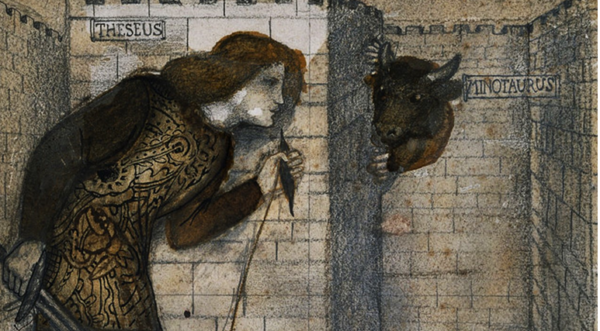
“Everyone carries a shadow, and the less it is embodied in the individual’s conscious life, the blacker and denser it is. If an inferiority is conscious, one always has a chance to correct it… But if it is repressed and isolated from consciousness, it never gets corrected, and is liable to burst forth suddenly in a moment of unawareness. At all counts, it forms an unconscious snag, thwarting our most well-meant intentions.”
Carl Jung, C.W. Vol. 11: Psychology and Religion: West and East
A large amount of the reports of jester encounters are accompanied by the common feeling of anxiety, fear, hopelessness and despair. At times, jesters appear as negative energies or beings which exist in a lower dimension. They often appear cunning and demonic and their intentions seem to be far from helping or healing the individual experiencing altered states of consciousness. Instead, these entities exhibit a cruel, trickster and deceptive type of character, voicing out negative thoughts and emotions, as they guide the person through negative life scenarios or transport them into hell. Most of these psychedelic encounters are accompanied by resistance on behalf of the person going through this type of psychedelic journey. According to Jung, these jester entities may be just a reflection of one’s personal shadow.
The personal shadow and how to recognize it
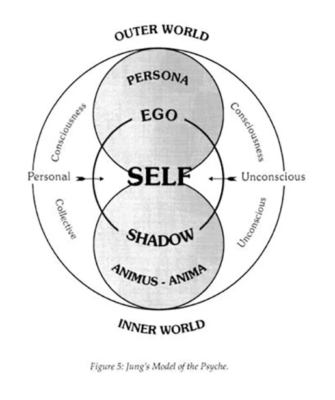
The personal shadow, according to Jung is “the thing a person has no wish to be” and represents the denied or hidden aspects of the self. The shadow represents the attributes of the ego a person is unaware of and a depiction of some characteristics they may not like. The shadow will manifest when a person strongly identifies with the persona, which is one’s social mask. Oftentimes, we can recognize our shadow when we get a feeling of self-sabotage.
In that situation, we consciously intend to achieve something but some unconscious behavioral patterns will sabotage that goal. According to Jung, when our ego is under control, we may be aware of our shadow. However, oftentimes, many of us are unfortunately unaware of these hidden aspects of the self or refuse to recognize how our shadow behaves and when and when it acts out. Is refusing to acknowledge one’s shadow dangerous? It could be. If we don’t acknowledge our shadow, it can come to surface and take control – sabotaging us. Usually, one can notice the shadow emerging if a person starts acting with cruelty towards others, has random bursts of irritability or mood swings.
Is there another way the shadow can be identified?
Yes. We can also identify our shadow through its phenomenology. The shadow will manifest in our individual experience as a strong emotional response to something, and it will usually come as a bodily response such as a tension or contraction. It could be an emotional or even physical reaction to something in an environment, to an individual, or it could even be a reaction to something we do. For instance, we might react with hatred or disdain towards someone we believe is often lying or exaggerating the truth, saying “I don’t like him or trust him – he’s a liar.” However, it could be highly possible that we are projecting some aspects of our relationship with honesty onto the person we dislike due to their dishonesty. We may even respond with violence. Yes, dishonesty is usually an unappealing trait overall, but when this characteristic is accompanied by a heightened emotional reaction towards that person or their lies, it may be worth considering that we may be projecting some dishonest aspects of ourselves that we prefer to deny. We should also recognize the aspects or characteristics that repulse us, because oftentimes, what we notice and what we find bothersome is what we wish not be or not to be around. In other words, we want to become aware of what bothers us, what provokes jealousy in us, what makes us angry, or even what makes us feel inadequate.
Why is becoming aware of your shadow important?

Lewis Hyde, Trickster Makes This World
Jung is known to accentuate the importance of becoming aware of our shadow and how it projects itself in our person’s life. The shadow is not necessarily a mere representation of a person’s negative qualities. If you get to truly know your shadow, it could also reveal or unearth some positive aspects that may actually benefit you and your life.
Marie-Louis von Franz, a close collaborator of Jung once said, “The shadow is not necessarily always an opponent. In fact, he is exactly like any human being with whom one has to get along, sometimes by giving in, sometimes by resisting, sometimes by giving love – whatever the situation requires. The shadow becomes hostile only when he is ignored or misunderstood.”
In other words, the shadow can reveal a plethora of positive traits that have been repressed and that deserve to be nurtured and incorporated in our personality. If a person decides against exploring these potential positive attributes, they will never fully develop them which could impede on that person’s growth and development. Perhaps a good example is to use a person, let’s call him Mason. Mason believes that being assertive is bad. In fact, he fears that if he truly stands up and expresses his ideas confidently he’ll be considered rude, which will go against his social mask. What’s the repercussion? By fearing to express himself, he will not develop the confidence to truly communicate his ideas and stand behind his opinions. Of course, we can assume how this could negatively affect his performance at the workplace or even his personal relationships. Being unable to bring forth one’s ideas through respectful argumentation can cause a person to remain in their current position for a long time, never truly advancing or climbing the oh so important socio-economic scale which could discourage them to think outside the box, and decrease their productivity. And we can all guess how this will ultimately prevent Mason to climb the economic ladder, which could lead to feelings of hopelessness, anxiety and depression. This example may hit close to home, especially for those living in North America, dreaming about the white picket fence, two-story house guarded by a friendly yet protective dog, and so on. Or perhaps Mason is unable to be assertive when it comes to proposing activities to his friends, which unfortunately means that he never ends up doing what he would like to do. This may make him feel like a pushover, like he is disrespected, or even unacknowledged. What happens then? Well, Mason may develop some feelings of insecurity that he will end up projecting onto a person with a strong and assertive character because he feels like he doesn’t measure up in their presence. But that emotional reaction is simply a reflection of Mason’s inability to truly incorporate these assertive traits himself which will ultimately feed his shadow, giving it the ability to sabotage him. According to Marie-Louis von Franz, to prevent this scenario from happening, a person should avoid repressing the shadow’s positive traits and incorporate them into their life. In many of the “bad trip” reports where people encounter the trickster type personality, the entity appears to become angrier and the trip becomes more unpleasant as the person forcefully resists the experience. This could also be interpreted as a refusal to experience ego death, which in this circumstance could lead to a “bad trip”. In exploring the Jungian perspective of the shadow when encountering the trickster, it may prove beneficial to greet this enigmatic figure with curiosity rather than fear. By doing so, we open ourselves to the possibility that the trickster may serve as a mirror, revealing attributes of our own shadow that have long remained dormant or repressed. Embracing this perspective grants us the opportunity for introspection and growth.
Read also: What is ego death and how does it work?
Can we reduce our shadow’s destructive potential?
Yes. According to Jung, we can do this through a rigorous process he calls “shadow work”. Shadow work is essentially the process of learning to recognize or pinpoint the shadow’s characteristics. Once we can easily identify them, we can a integrate them into our personality. To achieve this, it requires a lot of self-awareness and introspection because we must be able to take note of our emotional reactions towards specific situations, people and things in our immediate environment. By doing this and by also recording and analyzing our dreams, we can detect how our shadow expresses itself and reveal its characteristics. As Jung once said, “There is no light without shadow and no psychic wholeness without imperfection.” By achieving individuation, which Jung referred to as the intergradation of all the parts of our personality of which we aren’t presently conscious, we can align ourselves and become complete.
Final thoughts
So how do we interpret our experience with DMT jesters? It depends on the nature of the jester we encounter and the person’s individual experience. The type of jester entity that individuals encounter may be an indication of what the spirit molecule is attempting to reveal to the journeyer. However, according the the numerous trip reports on reddit, one can guess that these entities love challenging our ego, enjoy portraying our shadow self, and frequently attempt to tell us to not take life too seriously.
To learn more about the psychology of the trickster, you may enjoy the video below:
